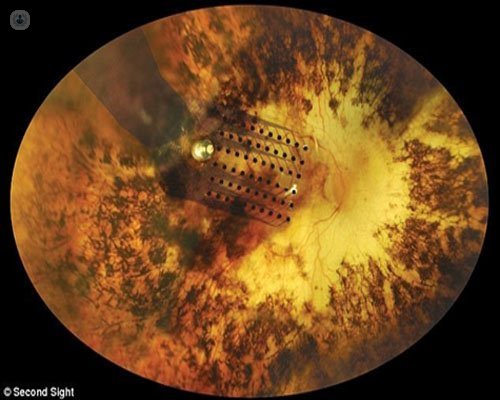Why artificial vision chips are not a good treatment
Written by:
What is a chip of artificial vision?
Artificial vision chips are devices created to stimulate the retina electrically. System is an integrated in glasses worn by the patient camera, which transmits the information to a chip that has been implanted in the retina surgery. This chip transmits the information to the optic nerve and the brain.These devices are not new, as are systems that were first developed over 25 years ago. However, this time the results have not been good, since they have not proven to be a good alternative because the image quality they offer is not a real impact on the quality of life of patients.
Chips for diseases of retina
The system is based on direct stimulation of the retina, so it should be prescribed to patients with the same problems, but whose optic nerve to function properly, as for transmitting information from the retina to the brain is necessary to the optic nerve. For that reason, the chips are not useful artificial vision in people with optic nerve diseases, such as patients with end-stage glaucoma, which have atrophied optic nerve.The main diseases of the retina that can benefit from these chips would be affecting the outer layers, especially the photoreceptor, such as retinitis pigmentosa.

Eye model with artificial vision chip implanted
Improvements in the patient with artificial vision chip
To electrically stimulate the retina the patient will receive some flashes of light or flashes emitting device electrodes. Art systems that have for example 150 electrodes cause the patient's view of these sparks distributed in its field of view, like 150 pixels in a black and white photograph. The resulting image is very simple.

chip implanted retina
Drawbacks of the chip on the retina
These devices are implanted in a surgical procedure that involves many risks both in the same operation as in the postoperative period.It is difficult to integrate an inorganic element in living tissue, it is possible that the chip, when in contact with the retinal surface, generate some scar tissue that would significantly reduce the transmission of nerve stimulation. In addition, electric shocks to stimulate the retina can damage these tissues, even causing failure of the device, since the patient would not receive the light flashes.The practical result of this treatment is virtually zero, so it does not compensate take the risks against the benefits to be gained.
Alternative solutions for retinal problems
Blindness is caused because of a malfunction of ocular tissues, living tissues that are composed of cells. Therefore, a problem or cell death in the retina causes loss of vision. To restore a patient's vision, the future is to try to recover the function of these cells that do not work well, or replace dead cells with new ones.Treatment for recovering cellular function is gene therapy, which consists of modifying the genes for the cell to work properly recover and. If the cell is dead and seek to replace, should transplanted with new cells to replace dead function, known as the cell therapy.One of the cell therapy is therapy with stem cell found in the organism and can differentiate into various cell types. With them you can get to modulate the growth of these cells and turn them into retinal cells to replace dead retinal cells.

Stem cell image
Advances in the treatment of retinal
Gene therapy and cell therapy are two lines of research that have advanced in ophthalmology and other specialties. In the near future they may see progress that will answer retina diseases difficult to treat, such as Leber congenital amaurosis, a retinal disease suffering children. Already they achieved some results from patients who have managed to recover some vision. The challenge is now to make this benefit to the patient is maintained over time.


